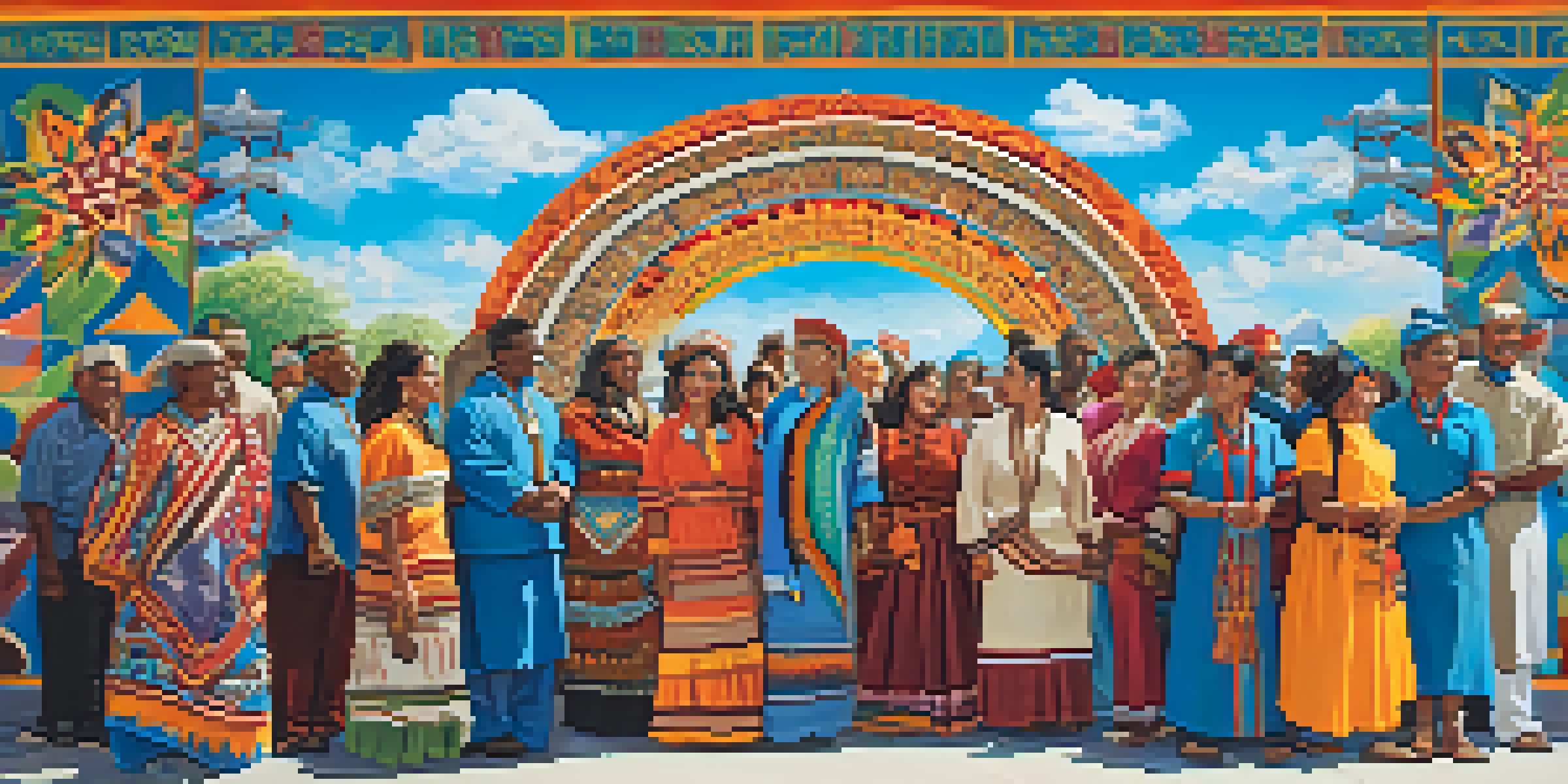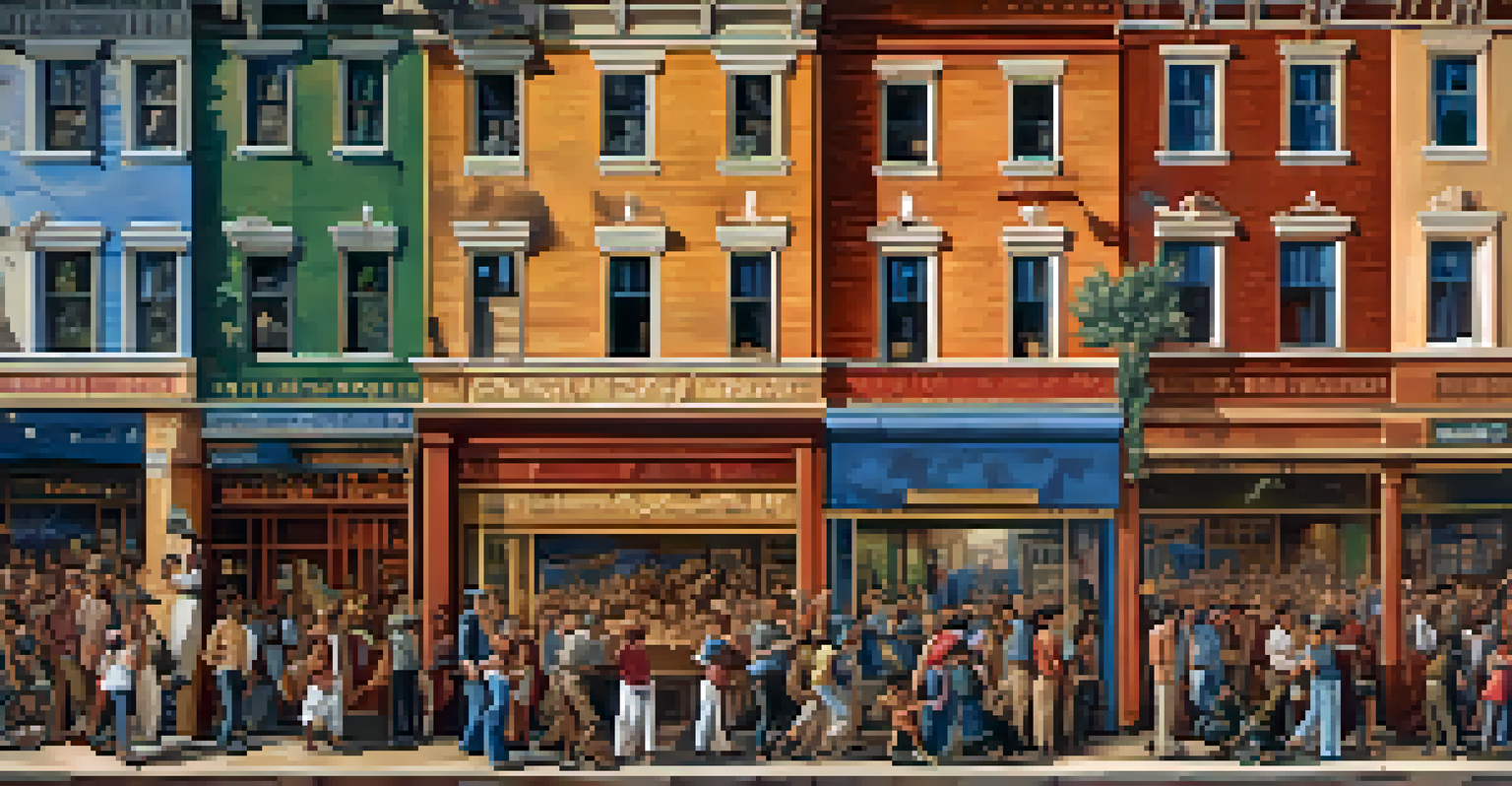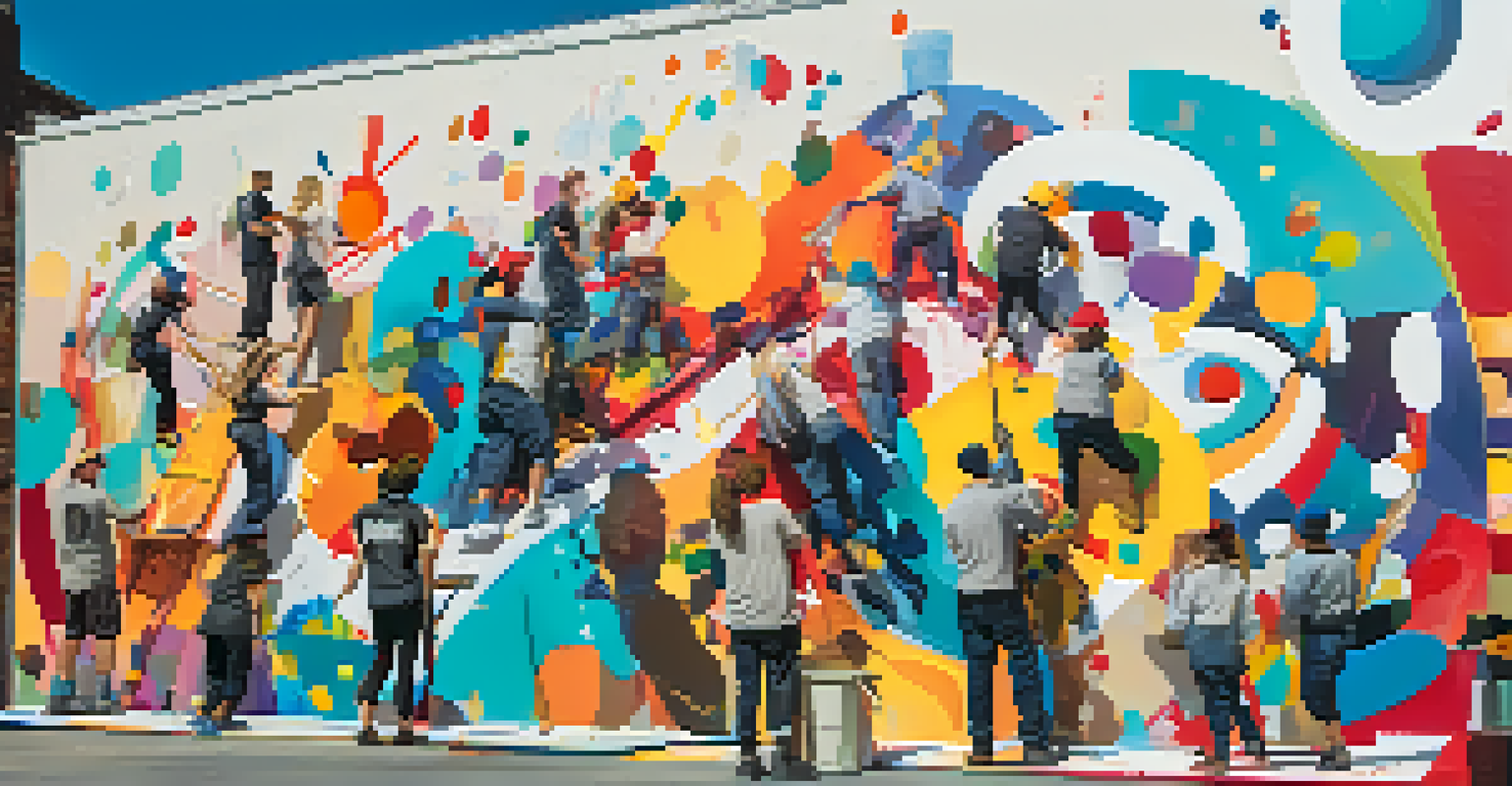Cultural Memory in Community Murals: A Collective Experience

Understanding Cultural Memory in Communities
Cultural memory refers to the shared pool of knowledge and experiences that shape a community's identity. It encompasses traditions, values, and collective experiences passed down through generations. This concept is vital in understanding how communities express themselves, especially through visual art forms such as murals.
Art is the most beautiful of all lies; it is the truth of our lives.
These murals often tell stories of the community’s past, celebrating both triumphs and struggles. They can serve as a canvas for historical events, cultural practices, and significant figures, creating a visual narrative that resonates with local residents. By reflecting the community's history, murals foster a sense of belonging and identity.
Moreover, cultural memory helps communities navigate their present and envision their future. When people engage with these murals, they are not just admiring art; they are connecting with their roots and each other, reinforcing the ties that bind them as a community.
The Role of Murals in Preserving History
Murals act as visual storytellers, preserving the history and experiences of a community in vibrant colors and compelling imagery. They often depict significant historical events or cultural milestones, making the past accessible to current and future generations. This preservation is crucial, especially in communities facing rapid change or gentrification.

For instance, in neighborhoods with rich histories, murals can highlight the struggles of marginalized groups, ensuring their stories are not forgotten. This visibility is essential for fostering awareness and appreciation of diverse cultural backgrounds. Community murals remind us that history is not just a series of dates and facts but a living narrative that continues to evolve.
Murals Preserve Community History
Murals serve as vibrant visual storytellers, capturing and preserving the collective experiences and histories of communities.
Additionally, these murals can spark dialogue among residents about their shared history. By engaging in conversations about the images and stories portrayed, community members can share their perspectives and deepen their understanding of one another, reinforcing their cultural memory.
Murals as a Tool for Social Change
Beyond preserving history, murals can serve as powerful tools for social change. Artists often use their work to address contemporary issues, such as inequality, racism, and environmental concerns. By doing so, they create a platform for community voices that might otherwise go unheard, encouraging activism and engagement.
Murals are a way of expressing the stories of our communities, connecting past, present, and future.
For example, a mural depicting a social justice theme can inspire community members to take action, whether through protests, community service, or educational initiatives. These visual messages can resonate deeply, sparking a collective movement toward positive change. Murals thus become a means of not just reflection, but also action.
In this way, community murals empower residents to reclaim their narratives and advocate for their rights. They transform public spaces into arenas for discussion and activism, reinforcing the idea that art can be a catalyst for progress and unity.
The Collaborative Nature of Mural Creation
Creating a mural is often a collaborative process, bringing together artists, community members, and local organizations. This teamwork fosters a sense of ownership and pride in the final product, as everyone involved contributes their unique perspectives and skills. The collaborative nature of mural creation reflects the community's diverse voices and experiences.
During the planning stages, community members might hold meetings to discuss themes, design elements, and messages they wish to convey. This inclusion ensures that the mural accurately represents the community's identity and aspirations. Such collaborative efforts can also strengthen relationships among residents, fostering a spirit of camaraderie.
Art as a Catalyst for Change
Murals can address contemporary social issues, empowering communities to engage in activism and reclaim their narratives.
Furthermore, the act of painting itself can be a communal event, drawing in passersby and encouraging participation. This engagement transforms the mural from a mere artwork into a lively spectacle, enhancing the community's connection to the piece and each other.
The Emotional Impact of Murals
Murals have a unique ability to evoke emotions and provoke thought. The colors, imagery, and messages portrayed can resonate deeply with viewers, often stirring feelings of nostalgia, hope, or even anger. This emotional connection is vital in reinforcing cultural memory, as it helps individuals relate to the stories being told.
For many, seeing a mural that reflects their experiences can be incredibly validating. It reminds them that their stories matter and are worthy of being shared. This validation can foster pride in one's cultural heritage and encourage individuals to engage with their community more actively.
Additionally, murals can serve as a healing tool for communities dealing with trauma or loss. By depicting themes of resilience and solidarity, they can promote healing and unity, reminding residents that they are not alone in their struggles.
Engaging Youth Through Murals
Community murals can be particularly engaging for youth, providing them with a creative outlet to express themselves. Many programs involve young people in the mural creation process, allowing them to explore their identities and perspectives through art. This engagement can instill a sense of pride and responsibility toward their community.
Through these initiatives, youth learn valuable skills such as teamwork, project management, and artistic techniques. They also gain a deeper understanding of their community’s history and issues, empowering them to become informed advocates for change. By connecting art with activism, murals inspire the next generation to carry forward the torch of cultural memory.
Youth Engagement Through Art
Community murals provide a creative outlet for youth, allowing them to explore their identities and develop a sense of responsibility towards their community.
Moreover, when young people see their contributions celebrated in public spaces, it can boost their confidence and encourage them to pursue further artistic endeavors. This sense of achievement fosters a lasting connection to their community, inspiring them to continue engaging in meaningful projects.
The Future of Community Murals
As cities evolve and communities grow, the role of murals will continue to adapt. With the rise of digital technology and social media, murals can now reach broader audiences, spreading cultural memories beyond local boundaries. This globalization of art can lead to cross-cultural exchanges and collaborations, enriching the artistic landscape.
However, it also raises questions about authenticity and cultural appropriation. Communities must navigate these challenges carefully, ensuring that their narratives remain rooted in their experiences. By prioritizing local voices and stories, murals can maintain their significance and impact.

Looking ahead, the future of community murals will likely be shaped by ongoing conversations about representation, identity, and social justice. These discussions will be crucial in ensuring that murals remain powerful tools for cultural memory and community engagement, inspiring generations to come.